Blog
Leonard Harold Breau (August 5, 1941 – August 12, 1984) was a Canadian-American guitarist. He blended many styles of music, including jazz, country, classical, and flamenco. Inspired by country guitarists like Chet Atkins, Breau used fingerstyle techniques not often used in jazz guitar. By using a seven-string guitar and approaching the guitar like a piano, he opened up possibilities for the instrument.
Breau was born August 5, 1941, in Auburn, Maine, but moved with his family to Moncton, New Brunswick in 1948. His francophone parents, Harold Breau and Betty Cody, were professional country and western musicians who performed and recorded from the mid-1930s until the mid-1970s. From the mid to late 1940s they played summer engagements in southern New Brunswick, advertising their performances by playing free programs on radio station CKCW Moncton. Lenny began playing guitar at the age of eight. When he was twelve, he started a small band with friends, and by the age of fourteen he was the lead guitarist for his parents’ band, billed as “Lone Pine Junior”, playing Merle Travis and Chet Atkins instrumentals and occasionally singing. He made his first professional recordings in Westbrook, Maine at Event Records with Al Hawkes at the age of 15 while working as a studio musician. Many of these recordings were released posthumously on the album Boy Wonder. The Breau family moved to Winnipeg, Manitoba, in 1957, and their new band performed around the city and province as the CKY Caravan. Their shows were radio broadcast live on Winnipeg’s CKY on Saturday mornings from remote locations. Breau had problems with drugs beginning in the 1960s which he managed to control during the last years of his life. On August 12, 1984, his body was found in a swimming pool at his apartment complex in Los Angeles, California. The coroner reported that Breau had been strangled. Breau’s wife, Jewel, was the chief suspect, but she was not charged. He is interred in an unmarked grave at Forest Lawn Memorial Park Cemetery.
more...The performance of soleá singing has guitar and clapping accompaniment. Like many of the flamenco styles, it has a formal structure that responds to the following model:
A guitar introduction, accompanied by a departure ayeo (the singer’s famous ‘ay ay ay’).
The cante (singing), made up of various types such as the brave cante and auction, accompanied by the guitarist’s improvisation collected under the name of “falsetas”, which appear interspersed during the performance.
The closing of the performance, given the time in which it is performed, causes a silence that encourages the public to broadcast the famous “olé”.
As for the metric, the soleá shares a great similarity with the seguiriyas, with a 3 × 4 rhythm and a twelve-beat measure, which are divided into two of six. The stanza is made up of four or three octosyllabic verses and its theme evokes deep and sad feelings.
more...Zamya Theater presents Second Chance a story by homeless actors. Mill City Museum 7pm. Music by Carlisle Evans Peck and mick laBriola.
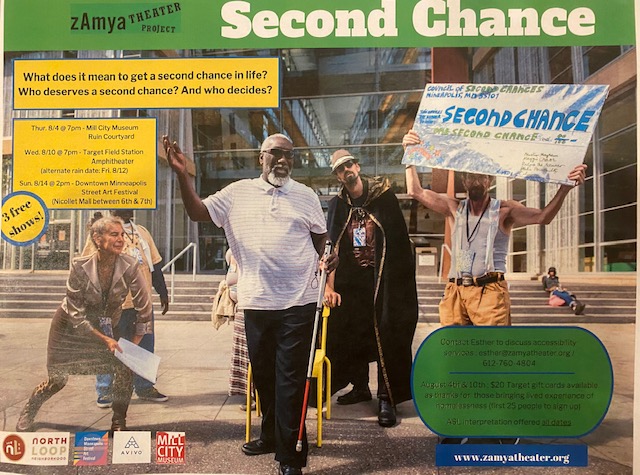
This star-studded image from the NASA/ESA Hubble Space Telescope shows the heart of the globular cluster NGC 6638 in the constellation Sagittarius. The star-strewn observation highlights the density of stars at the heart of globular clusters, which are stable, tightly bound clusters of tens of thousands to millions of stars. To capture the data in this image, Hubble used two of its cutting-edge astronomical instruments: Wide Field Camera 3 and the Advanced Camera for Surveys. Hubble revolutionised the study of globular clusters, as it is almost impossible to clearly distinguish the stars in globular clusters with ground-based telescopes. The blurring caused by Earth’s atmosphere makes it impossible to tell one star from another, but from Hubble’s location in low Earth orbit the atmosphere no longer poses a problem. As a result, Hubble has been used to study what kind of stars globular clusters are made up of, how they evolve, and the role of gravity in these dense systems. The NASA/ESA/CSA James Webb Space Telescope will further our understanding of globular clusters by peering into those globular clusters that are currently obscured by dust. Webb will predominantly observe at infrared wavelengths, which are less affected by the gas and dust surrounding newborn stars. This will allow astronomers to inspect star clusters that are freshly formed, providing insights into stellar populations before they have a chance to evolve.
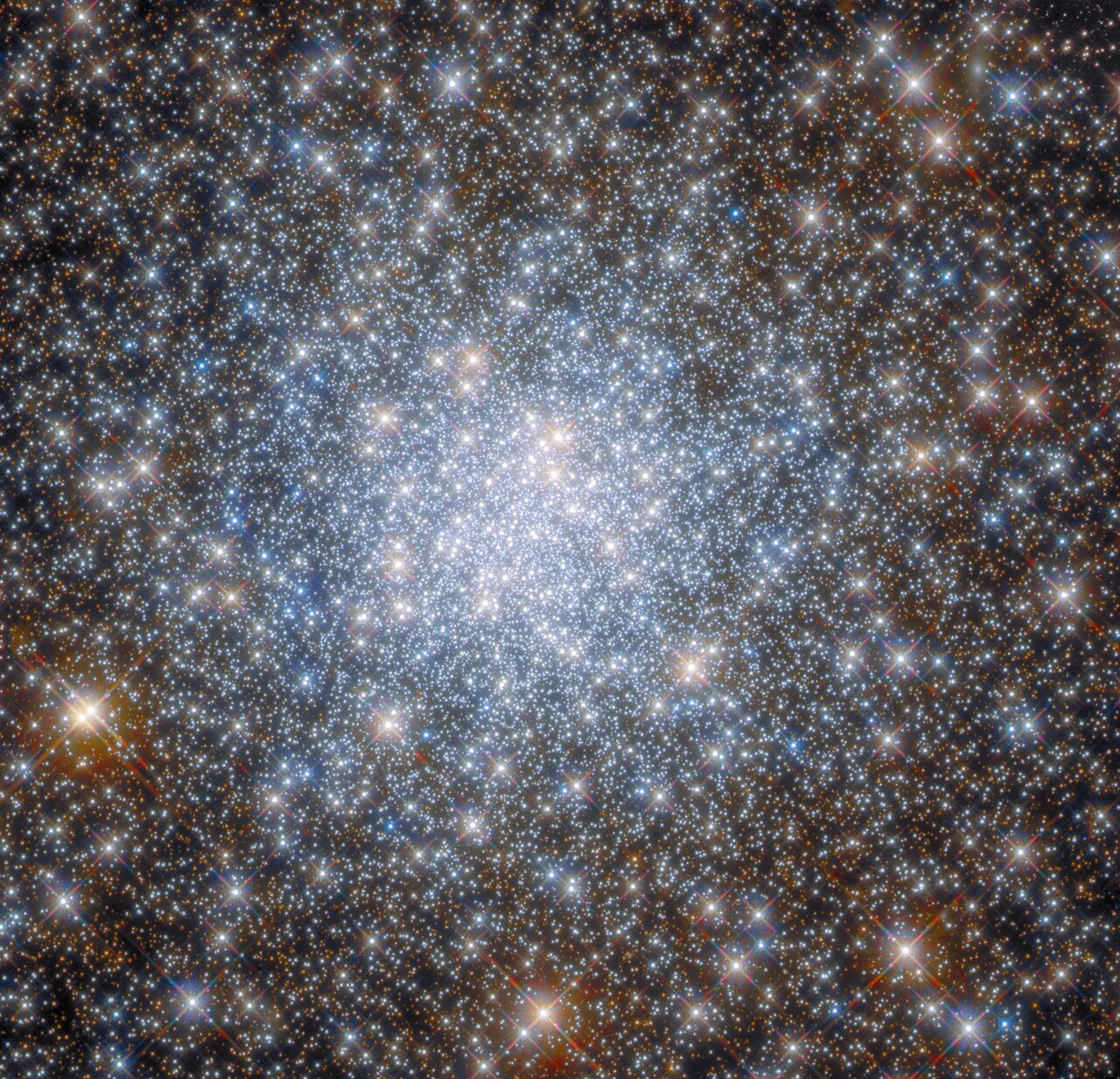
Jeff Hamilton (born August 4, 1953) is an American jazz drummer and co-leader of the Clayton-Hamilton Jazz Orchestra. A former member of the L.A. Four, Hamilton has played with jazz pianist Monty Alexander, bandleader Woody Herman, and singer Rosemary Clooney, and has worked extensively with singer Diana Krall.
Hamilton was born in Richmond, Indiana, United States,. From a young age he took piano lessons but was inspired at age five by Gene Krupa and then began drumming at the age of eight. At fifteen, he was invited to play with the Earlham College jazz ensemble. He later attended Indiana University while studying under the tutelage of John Von Ohlen.
https://www.youtube.com/watch?v=y3Egvhpm35g
more...Huey “Sonny” Simmons (August 4, 1933 – April 6, 2021) was an American jazz musician.
Simmons was born on August 4, 1933 in Sicily Island, Louisiana. He grew up in Oakland, California, where he began playing the English horn. (Along with Vinny Golia, Simmons was among the few musicians to play the instrument in a jazz context.) At age 16 he took up the alto saxophone, which became his primary instrument. Simmons played primarily in an avant-garde style, often delving into free jazz.
His then-wife, Barbara Donald, played trumpet on several of his early records, including his ESP-Disk titles Staying on the Watch and Music from the Spheres; Arhoolie title Manhattan Egos, and Contemporary titles Rumasuma and the double album Burning Spirits. Simmons also partnered with Prince Lasha on several recordings, two of which – The Cry! (1963) and Firebirds (1968) – were released by Contemporary.
more...Mitchell Herbert Ellis (August 4, 1921 – March 28, 2010), known professionally as Herb Ellis, was an American jazz guitarist. During the 1950s, he was in a trio with pianist Oscar Peterson.
Born in Farmersville, Texas, and raised in the suburbs of Dallas, Ellis first heard the electric guitar performed by George Barnes on a radio program. This experience is said to have inspired him to take up the guitar. He became proficient on the instrument by the time he entered North Texas State University. Ellis majored in music, but because they did not yet have a guitar program at that time, he studied the string bass. Unfortunately, due to lack of funds, his college days were short-lived. In 1941, Ellis dropped out of college and toured for six months with a band from the University of Kansas.
more...Louis Daniel Armstrong (August 4, 1901 – July 6, 1971 NOLA), nicknamed “Satchmo“, “Satch“, and “Pops“, was an American trumpeter and vocalist. He is among the most influential figures in jazz. His career spanned five decades and different eras in the history of jazz.
Armstrong was born and raised in New Orleans. Coming to prominence in the 1920s as an inventive trumpet and cornet player, Armstrong was a foundational influence in jazz, shifting the focus of the music from collective improvisation to solo performance. Around 1922, he followed his mentor, Joe “King” Oliver, to Chicago to play in the Creole Jazz Band. In Chicago, he spent time with other popular jazz musicians, reconnecting with his friend Bix Beiderbecke and spending time with Hoagy Carmichael and Lil Hardin. He earned a reputation at “cutting contests” and his fame reached band leader Fletcher Henderson. Henderson persuaded Armstrong to come to New York City, where he became a featured and musically influential band soloist and recording artist. Hardin became Armstrong’s second wife and they returned to Chicago to play together and then he began to form his own “Hot” jazz bands. After years of touring, he settled in Queens, and by the 1950s, he was a national musical icon, assisted in part, by his appearances on radio and in film and television, in addition to his concerts.
With his instantly recognizable rich, gravelly voice, Armstrong was also an influential singer and skillful improviser, bending the lyrics and melody of a song. He was also skilled at scat singing. Armstrong is renowned for his charismatic stage presence and voice as well as his trumpet playing. By the end of Armstrong’s life, his influence had spread to popular music in general. Armstrong was one of the first popular African-Americanentertainers to “cross over” to wide popularity with white (and international) audiences. He rarely publicly politicized his race, to the dismay of fellow African Americans, but took a well-publicized stand for desegregation in the Little Rock crisis. He was able to access the upper echelons of American society at a time when this was difficult for black men.
Armstrong appeared in films such as High Society (1956) alongside Bing Crosby, Grace Kelly, and Frank Sinatra, and Hello, Dolly! (1969) starring Barbra Streisand. He received many accolades including three Grammy Award nominations and a win for his vocal performance of Hello, Dolly! in 1964. In 2017, he was posthumously inducted into the Rhythm & Blues Hall of Fame.
more...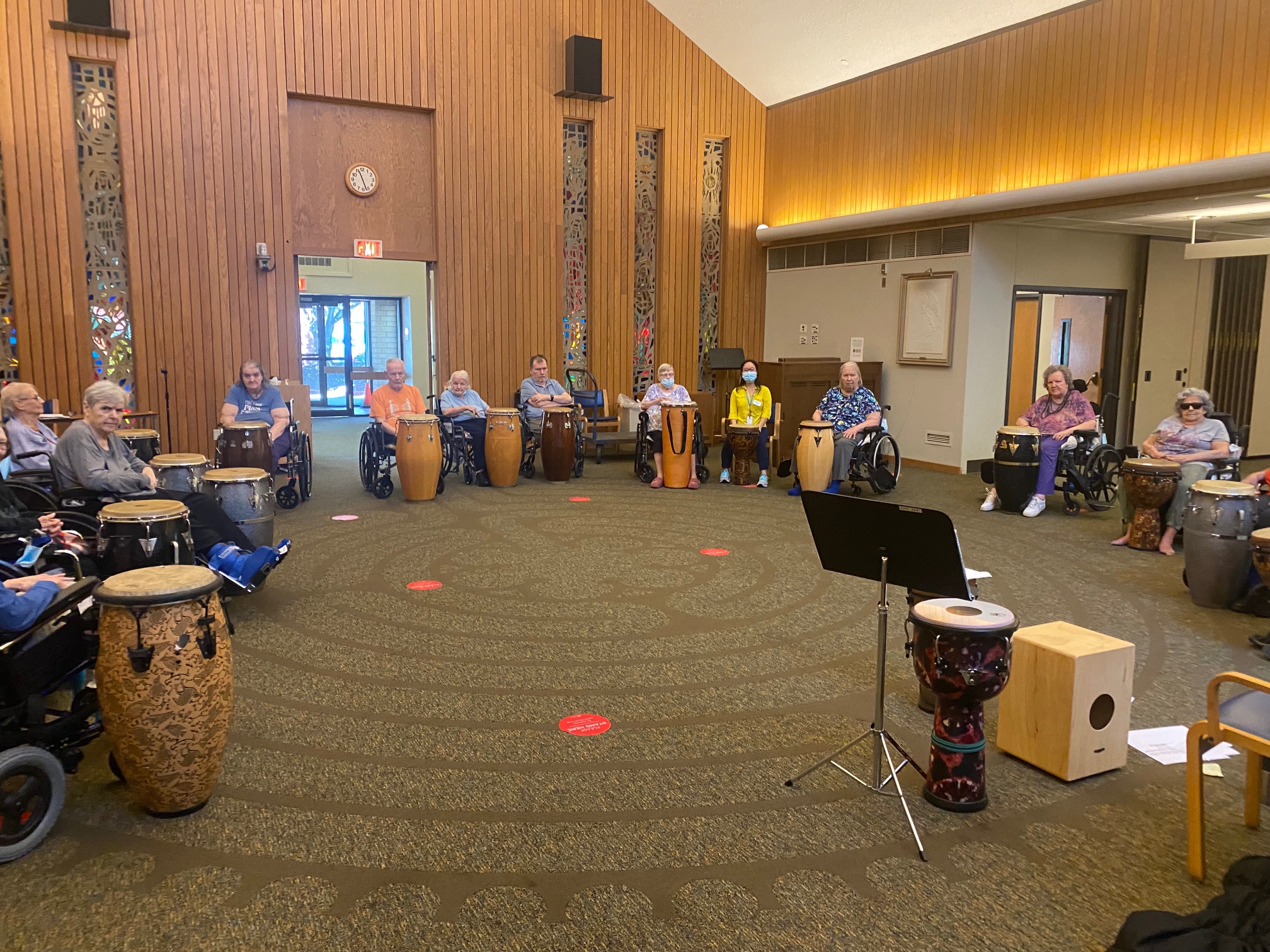
What created the unusual halo around the Cat’s Eye nebula? No one is sure. What is sure is that the Cat’s Eye Nebula (NGC 6543) is one of the best known planetary nebulae on the sky. Although haunting symmetries are seen in the bright central region, this image was taken to feature its intricately structured outer halo, which spans over three light-years across. Planetary nebulae have long been appreciated as a final phase in the life of a Sun-like star. Only recently however, have some planetaries been found to have expansive halos, likely formed from material shrugged off during earlier puzzling episodes in the star’s evolution. While the planetary nebula phase is thought to last for around 10,000 years, astronomers estimate the age of the outer filamentary portions of the Cat’s Eye Nebula‘s halo to be 50,000 to 90,000 years.
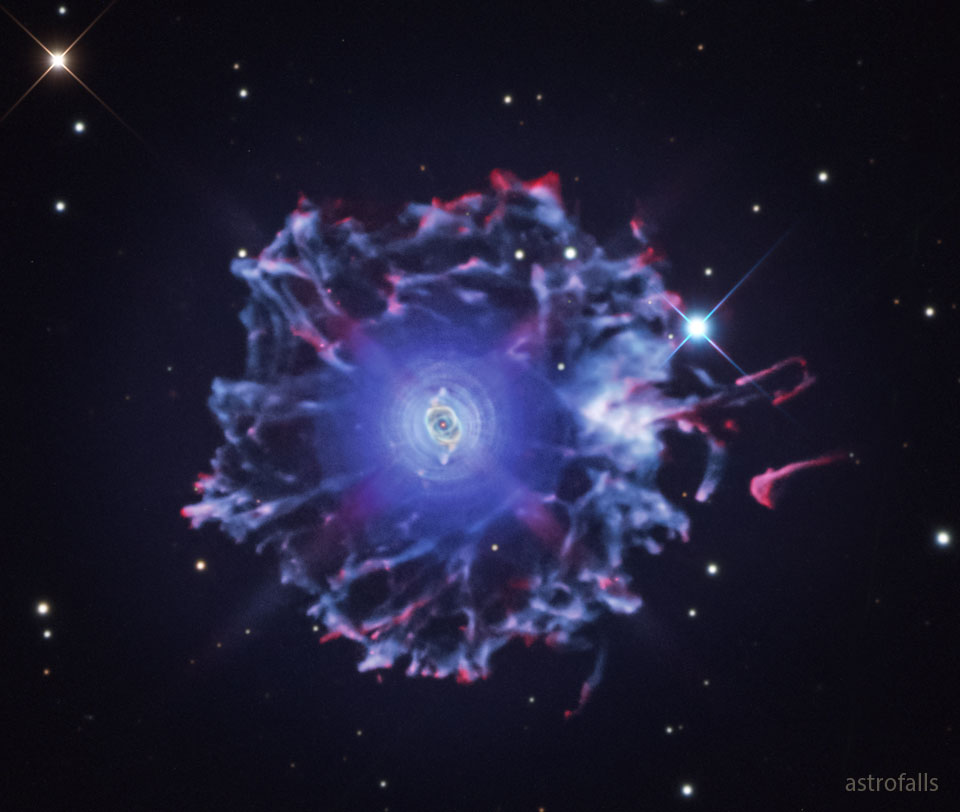
more...
Lucky Philip Dube (pronounced duu-beh; 3 August 1964 – 18 October 2007) was a South African reggae musician and Rastafarian. Considered by many to be one of the most important musicians in the history of African dub and reggae, his contribution to the South African music together with his political songs fought against Apartheid in South Africa. He recorded 22 albums in Zulu, English, and Afrikaans in a 25-year period and was South Africa’s biggest-selling reggae artist to date. Dube was murdered in the Johannesburg suburb of Rosettenville on the evening of 18 October 2007.
Lucky Dube was born in Ermelo, formerly of the Eastern Transvaal, now of Mpumalanga, on 3 August 1964. His parents separated before his birth, and he was raised by his mother, who named him Luckybecause she considered his birth fortunate after a number of failed pregnancies. Along with his two siblings, Thandi and Mandla, Dube spent much of his childhood with his grandmother, Sarah, while his mother relocated to work. In a 1999 interview, he described his grandmother as “his greatest love” who “multiplied many things to bring up this responsible individual that I am today.”
more...Roscoe Mitchell (born August 3, 1940) is an American composer, jazz instrumentalist, and educator, known for being “a technically superb – if idiosyncratic – saxophonist”. The Penguin Guide to Jazz described him as “one of the key figures” in avant-garde jazz; All About Jazz stated in 2004 that he had been “at the forefront of modern music” for more than 35 years. Critic Jon Pareles in The New York Times has mentioned that Mitchell “qualifies as an iconoclast”. In addition to his own work as a bandleader, Mitchell is known for cofounding the Art Ensemble of Chicago and the Association for the Advancement of Creative Musicians (AACM).
Mitchell was born in Chicago, Illinois, United States. He also grew up in the Chicago area, where he played saxophone and clarinet at around age twelve. His family was always involved in music with many different styles playing in the house when he was a child as well as having a secular music background. His brother, Norman, in particular was the one who introduced Mitchell to jazz. While attending Englewood High School in Chicago, he furthered his study of the clarinet. In the 1950s, he joined the United States Army, during which time he was stationed in Heidelberg, Germany and played in military parades with fellow saxophonists Albert Ayler and Rubin Cooper, the latter of whom, Mitchell commented, “took me under his wing and taught me a lot of stuff”. He also studied under the first clarinetist of the Heidelberg Symphony while in Germany. Mitchell returned to the United States in the early 1960s, relocated to the Chicago area, and performed in a band with Wilson Junior College undergraduates Malachi Favors (bass), Joseph Jarman, Henry Threadgill, and Anthony Braxton (all saxophonists). Mitchell also studied with Muhal Richard Abrams and played in his band, the Muhal Richard Abrams’ Experimental Band, starting in 1961.
more...
Anthony Dominick Benedetto (born August 3, 1926), known professionally as Tony Bennett, is an American singer of traditional pop standards, big band, show tunes, and jazz. He is also a painter, having created works under his birth name that are on permanent public display in several institutions. He is the founder of the Frank Sinatra School of the Arts in Astoria, Queens, New York.
Bennett began singing at an early age. He fought in the final stages of World War II as a U.S. Army infantryman in the European Theater. Afterward, he developed his singing technique, signed with Columbia Records and had his first number-one popular song with “Because of You” in 1951. Several tracks such as “Rags to Riches” followed in early 1953. He then refined his approach to encompass jazz singing. He reached an artistic peak in the late 1950s with albums such as The Beat of My Heart and Basie Swings, Bennett Sings. In 1962, Bennett recorded his signature song, “I Left My Heart in San Francisco“. His career and personal life experienced an extended downturn during the height of the rock music era. Bennett staged a comeback in the late 1980s and 1990s, putting out gold record albums again and expanding his reach to the MTV generation while keeping his musical style intact.
Bennett continued to create popular and critically praised work into the 21st century. He attracted acclaim for his collaborations with Lady Gaga, which began with the album Cheek to Cheek (2014); the two performers toured together to promote the album throughout 2014 and 2015. With the release of the duo’s second album, Love for Sale (2021), Bennett broke the individual record for the longest span of top-10 albums on the Billboard 200 chart for any living artist; his first top-10 record was I Left My Heart in San Francisco in 1962. Bennett also broke the Guinness World Record for the oldest person to release an album of new material, at the age of 95 years and 60 days.
Bennett has amassed numerous accolades throughout his career, including 20 Grammy Awards (including a Lifetime Achievement Award presented in 2001) and two Primetime Emmy Awards. He was named an NEA Jazz Master and a Kennedy Center Honoree. Bennett has sold over 50 million records worldwide.
In February 2021, it was revealed that Bennett was diagnosed with Alzheimer’s disease in 2016. Due to the slow progression of his illness, he continued to record, tour, and perform until his retirement from concert performances in August 2021 due to physical challenges. Anthony Dominick Benedetto was born on August 3, 1926, at St. John’s Hospital in Long Island City, Queens in New York City. He is a son of grocer John Benedetto and seamstress Anna (Suraci), and was the first member of his family to be born in a hospital. In 1906, John had emigrated from Podargoni, a rural eastern district of the southern Italian city of Reggio Calabria. Anna had been born in the U.S. shortly after her parents also emigrated from the Calabria region in 1899. Other relatives came over as well as part of the mass migration of Italians to America. Tony grew up with an older sister, Mary, and an older brother, John Jr. With a father who was ailing and unable to work, the children grew up in poverty. John Sr. instilled in his son a love of art and literature, and a compassion for human suffering, but died when Tony was 10 years old. The experience of growing up in the Great Depression and a distaste for the effects of the presidency of Herbert Hoover would make the child a lifelong Democrat.
more...Eddie Jefferson (August 3, 1918 – May 9, 1979) was an American jazz vocalist and lyricist. He is credited as an innovator of vocalese, a musical style in which lyrics are set to an instrumental composition or solo. Jefferson himself claims that his main influence was Leo Watson. Perhaps Jefferson’s best-known song is “Moody’s Mood for Love” which was recorded in 1952, though two years later a recording by King Pleasure catapulted the contrafact into wide popularity (King Pleasure even cites Jefferson as a personal influence). Jefferson’s songs “Parker’s Mood” and “Filthy McNasty” were also hits.
Jefferson was born in Pittsburgh, Pennsylvania, United States.[3] One of his most notable recordings, “So What“, combined the lyrics of artist Christopher Acemandese Hall with the music of Miles Davis to highlight his skills, and enabled him to turn a phrase, into his style he calls jazz vocalese.
Jefferson’s last recorded performance was at the Joe Segal’s Jazz Showcase in Chicago and was released on video by Rhapsody Films. He shared the stand with Richie Cole (alto sax), John Campbell (piano), Kelly Sill (bass) and Joel Spencer (drums). The performance was part of a tour that Jefferson and Cole led together. Their opening night in Detroit, Michigan, was at Baker’s Keyboard Lounge, a jazz club built in the 1930s that has played host to famous musicians including those who spanned the genre with artists as diverse as Dexter Gordon and Sonny Stitt.
more...Sharpless 2-132 is a very faint emission type nebula on the Cepheus/Lacerta border. It lies at a degree southeast of Epsilon Cep, and has a size of about 40 arc minutes.
It is estimated to be about 10,000 to 12,000 light years away… but this is no more than an estimate. It’s a well studied region as well, with lots going on as you can see in the annotated image.
There’s information about the planetary nebula G101.5-00.6, the open Galactic custer called Teutsch 127 as well as the Wolf-Raynet star 153ab.
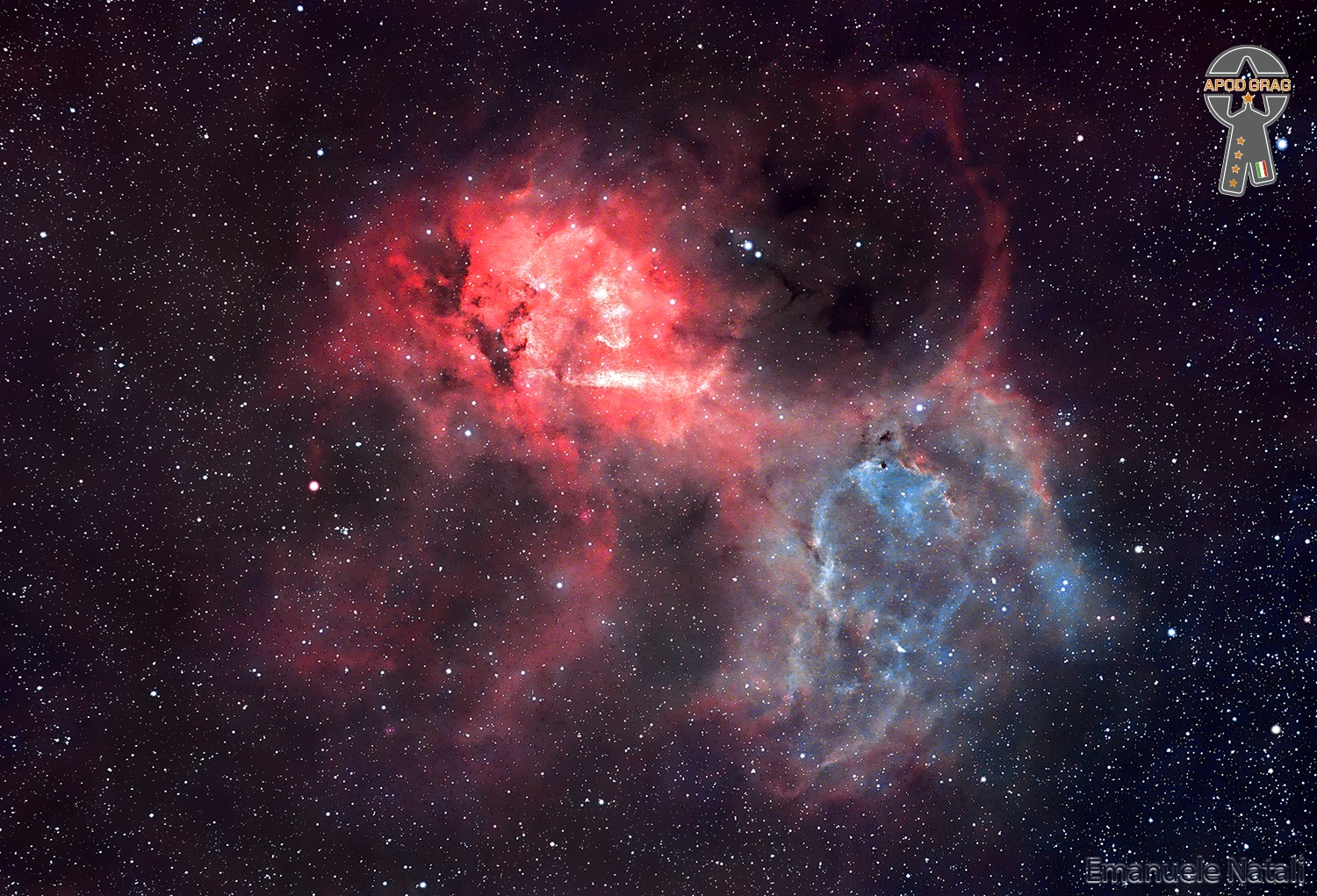
More Posts
- Daily Roots with Ijahman Levi
- The Cosmos with M100
- Branford Marsalis Day
- Leon Redbone Day
- World Music with Gjallarhorn
- Daily Roots with Horace Andy
- The Cosmos with NGC 6820/3
- Pat Martino Day
- Wayne Shorter Day
- World Music with Songhoy Blues
- Daily Roots with Johnny Osborne
- The Cosmos with NGC 4100
- Jim Capaldi Day
- Arthur “Big Boy” Crudup Day
- World Music with Cayetano Moreno Castro
- Daily Roots with Cornell Campbell
- The Cosmos with NGC 6503
- Keith Moon Day
- Terje Rypdal Day
- Gil Coggins Day